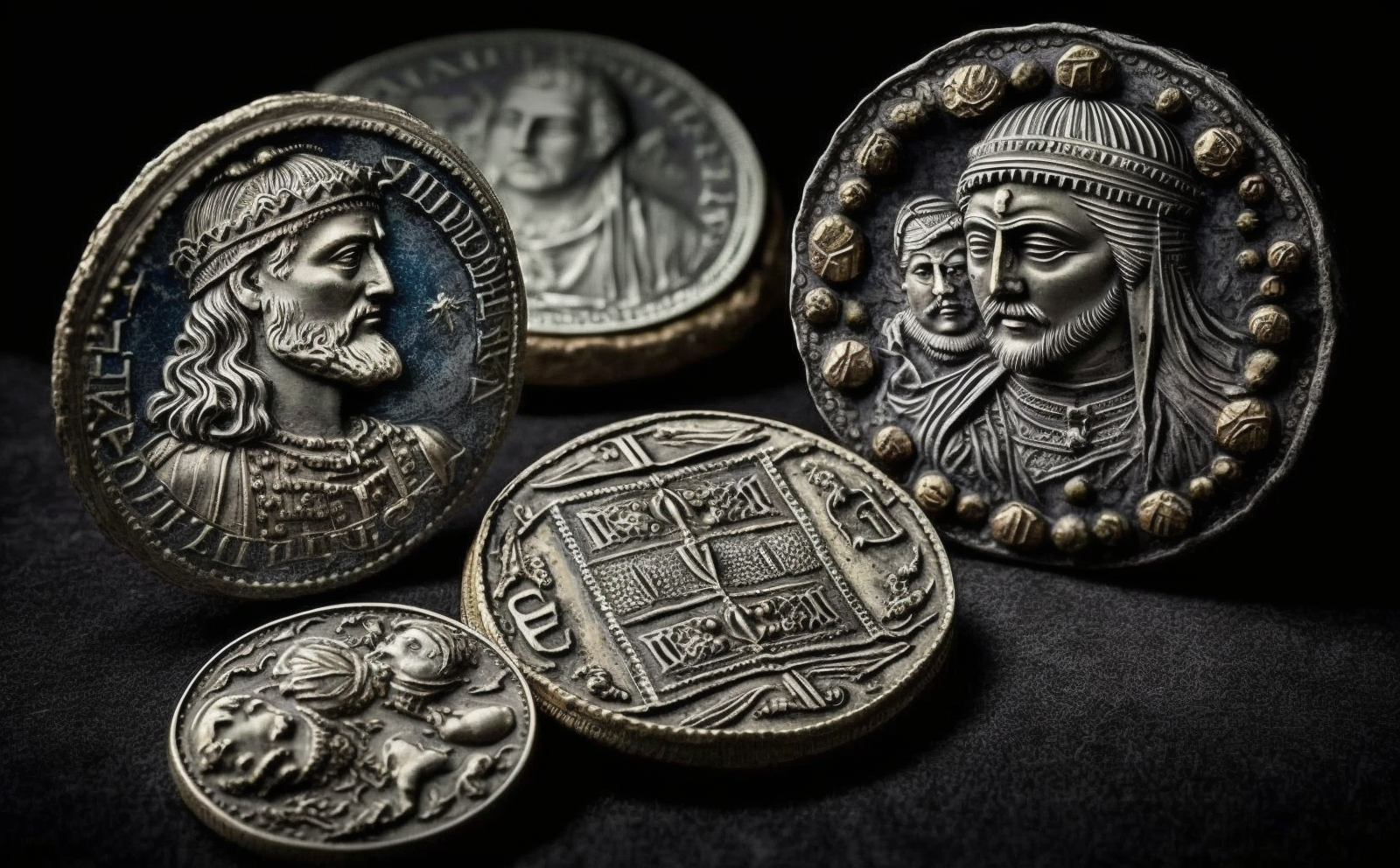Unlock The Value Of Your Coin Collection Understand Rare Coin Appraisal
Whether you inherited a cigar box of old coins or built a carefully curated cabinet, a thoughtful appraisal can turn uncertainty into knowledge and value. For antiques and art enthusiasts, coins present a rewarding mix of history, design, scarcity, and market nuance. This guide explains how rare coin appraisal works, what really drives value, how to prepare your collection for expert review, and how to move confidently from appraisal to sale or insurance.
Why Rare Coin Appraisal Matters
A proper appraisal clarifies what you own and why it’s worth what it’s worth. It supports multiple real-world needs:
- Insurance: Establish replacement value to set coverage and document your holdings before loss.
- Estate and donation: Provide fair market value for equitable distribution, charitable gifts, or tax reporting.
- Selling: Benchmark realistic asking prices, identify coins worth third-party grading, and plan the right venue.
- Collection management: Track condition, provenance, and gaps, and decide what to upgrade or deaccession.
Understand that “value” isn’t one number. Appraisers use different standards depending on purpose:
- Fair Market Value (FMV): The price between willing buyer and seller with reasonable exposure to the market—common for estates and donations.
- Retail Replacement Value (RRV): The cost to replace the item with a comparable example in a retail environment—used for insurance.
- Wholesale/Trade Value: What a dealer would typically pay—useful when you want quick liquidity.
- Liquidation Value: Expected proceeds under a constrained timeframe or forced sale conditions.
Align the appraisal scope with your goal up front to avoid mismatched expectations.
What Drives Value in Rare Coins
Coin values are set by more than just age or metal. Appraisers weigh a constellation of factors:
- Rarity and survival: Mintage is only the starting point. Survival estimates by grade matter more. A common-date Morgan dollar with millions extant differs vastly from a key date with a tiny high-grade population.
- Demand and collecting patterns: Popular series, type collecting, and registry competition (where collectors vie for top-graded sets) can push specific issues higher. A “conditional rarity” that’s common in low grade but scarce in Mint State may command premiums.
- Grade and eye appeal: Grading follows the Sheldon scale (1–70). Within a grade, eye appeal—original luster, attractive toning, clean fields, and a strong strike—can move a coin significantly up or down in price.
- Variety and errors: Overdates, doubled dies, repunched mintmarks, and dramatic mint errors can transform a modest coin into a standout. Correct attribution matters; minor varieties add little, major ones can multiply value.
- Metal content and intrinsic value: Bullion coins track spot metal prices, setting a floor. But numismatic value can exceed melt by multiples when rarity and demand align.
- Provenance: Coins traced to notable collections or historic hoards can bring premiums. Original packaging, certificates, and old auction tags support provenance.
- Market timing: Metals volatility, collector trends, and auction seasonality (spring/fall) affect results. Thinly traded series can see wider price swings when a single high-end transaction re-anchors expectations.
Don’t overlook negative factors: cleaning, hairlines, environmental damage, improper storage (PVC residue), tooling, whizzing, and repairs erode value. An honest appraisal notes these issues and adjusts.
Grading and Authentication Essentials
Grading and authentication are the backbone of appraisal. Here’s how professionals approach them:
- Authentication: Appraisers verify weight, diameter, thickness, edge style/reeding, and metal. They examine design details, die markers, and surfaces under magnification to spot cast or struck counterfeits, added mintmarks, altered dates, and assembled pieces. A simple magnet test can expose bogus “silver” pieces with steel cores.
- The Sheldon scale: Circulated grades range from About Good (AG3) to About Uncirculated (AU58); Mint State (MS60–MS70) covers uncirculated coins. Proof (PR/PF) denotes a method of manufacture, not necessarily condition—Proof coins can be impaired or circulated.
- Third-party grading (TPG): Certification by leading services creates market confidence, encapsulating coins in tamper-evident holders with assigned grade and attributions. Consider grading when:
- A coin is valuable enough that authentication materially changes liquidity and price.
- The difference between adjacent grades (e.g., MS64 vs. MS65) implies large price jumps.
- You plan to sell via auction, where graded coins usually perform better.
- Cost-benefit: Submission fees, shipping, insurance, and turnaround time add up. Not all coins merit grading—bullion pieces, cleaned common dates, and low-value circulated coins often do not. An appraiser can triage candidates.
- Conservation: Never clean coins. Even “gentle” methods can create hairlines or remove original surfaces. If necessary, ask about professional, non-invasive conservation to remove PVC residue or stabilize active corrosion. The right intervention can preserve—not manufacture—value.
When in doubt, resist the urge to “improve” a coin. Originality is prized; problems are hard to undo.
How to Prepare for a Professional Appraisal
Preparation saves time, money, and frustration—and leads to better outcomes.
- Inventory smartly: Record denomination, date, mintmark, variety (if known), grade/condition, holder (raw, album, TPG), purchase source, and any supporting documents. Even a simple spreadsheet helps.
- Sort logically: Separate bullion from numismatics; US from world; circulated from uncirculated; certified from raw. Pull out anything you suspect is a key date or error.
- Document provenance: Keep old invoices, auction catalogs, flips with handwritten attributions, and original mint packaging. These artifacts can justify pricing and interest.
- Photograph selectively: Take clear, straight-on photos of candidates for grading or sale. Avoid harsh light that blows out luster; use diffused lighting and show both sides and the edge if relevant.
- Identify potential varieties: Use reputable reference books or in-hand comparison to flag likely doubled dies, overdates, or die states. Mark them for the appraiser to verify.
- Define your objective: Tell the appraiser whether you need FMV for estate, RRV for insurance, or guidance to sell. Ask for a list of coins that merit TPG submission and a preliminary estimate of net proceeds after fees in different sale venues.
- Protect the collection: Use non-PVC flips, inert holders, or capsules. Keep coins dry, stable, and away from temperature swings. Transport in padded cases and insure in transit.
- Don’t crack slabs: If you have certified coins, leave them encapsulated. Removing them destroys the chain of trust.
Practical Checklist
- Make a master inventory (date, mint, denomination, variety, grade, holder, notes).
- Separate bullion, world coins, and low-value modern circulation finds.
- Flag likely key dates and major varieties for closer review.
- Gather provenance: mint packaging, invoices, old flips, auction tags.
- Photograph top coins (both sides; neutral background; diffused light).
- Note any problems (cleaning, spots, toning, corrosion) without attempting fixes.
- Decide your appraisal standard (FMV, RRV, wholesale) and purpose.
- Ask for triage: which coins to certify, conserve, or sell raw.
- Confirm fees, timeline, and deliverables for the appraisal report.
- Arrange secure transport and insurance for the appraisal appointment.
From Appraisal to Sale: Pricing, Offers, and Timing
An appraisal equips you to make informed next steps. Here’s how to translate findings into results:
- Read the report: It should include methodology, scope (what was and wasn’t examined), the standard of value, condition notes, and itemized values. For higher-value coins, expect rationale: comparables, population data, and recent sale references.
- Choose the venue:
- Auction: Best for rarities, fresh-to-market material, and graded coins with broad appeal. Consider seller’s commission, photography, marketing, and lotting strategy. Set reserves cautiously; overly aggressive reserves can suppress bidding.
- Specialist dealers: Efficient for series-focused collections and private transactions. Expect wholesale-to-FMV pricing; negotiate based on your appraisal and market comps.
- Consignment: Blends dealer reach with delayed payment; clarify commission, minimums, and duration.
- Direct sale: Selling to collectors can net higher prices but requires time, reputation, and careful vetting.
- Grouping vs. breaking: Common-date duplicates may sell better as group lots; standout pieces deserve individual attention. Avoid bundling premium coins with low-value material if it depresses total proceeds.
- Certification strategy: Submit only coins where the expected value increase exceeds fees by a comfortable margin. Target key dates, conditional rarities, and coins where authentication settles risk.
- Timing the market: Major auctions cluster in spring and fall; metals volatility can help or hurt bullion-heavy holdings. If you’re not time-constrained, let your venue advise on seasonality for your series.
- Manage taxes and logistics: Track basis if known; numismatic gains can be taxed at collectibles rates. Insure shipments, use discreet packaging, and document chain of custody. For international sales, mind export and import rules.
Common pitfalls to avoid:
- Cleaning before sale, which destroys value.
- Overgrading your own coins and rejecting fair offers.
- Paying to grade common, low-value coins.
- Ignoring selling fees when comparing gross prices to net proceeds.
- Letting urgency dictate venue—rushed liquidation rarely maximizes value.
FAQ
Q: Should I clean my coins before appraisal or sale? A: No. Cleaning (even “gentle” methods) often leaves hairlines, alters surfaces, and slashes value. If stabilization is necessary (e.g., active PVC residue), ask about professional conservation.
Q: When is third-party grading worth it? A: Grade when authentication reduces risk and the potential value jump exceeds submission costs. Key dates, conditional rarities, and coins where one grade point implies big price changes are prime candidates. Skip grading for common, low-value, or impaired coins.
Q: What’s the difference between fair market value and replacement value? A: Fair market value reflects typical selling prices between informed participants; it’s used for estates and donations. Retail replacement value reflects the cost to replace the coin from a retail source; it’s usually higher and used for insurance.
Q: How do appraisers handle varieties and errors? A: Significant varieties (major doubled dies, overdates) and dramatic mint errors receive specific attribution and pricing. Minor or unattributed varieties often bring little premium. Clear identification—ideally supported by certification—improves marketability.
Q: What’s the best way to store my coins after appraisal? A: Use inert, non-PVC holders or capsules, store in a stable, dry environment, avoid high humidity and temperature swings, and handle by edges with cotton or nitrile gloves. Keep documentation and provenance materials with the collection inventory.
By approaching appraisal with preparation and clear goals, you can unlock the full potential of your coin collection—protecting it, understanding it, and, when you choose, selling it wisely.




